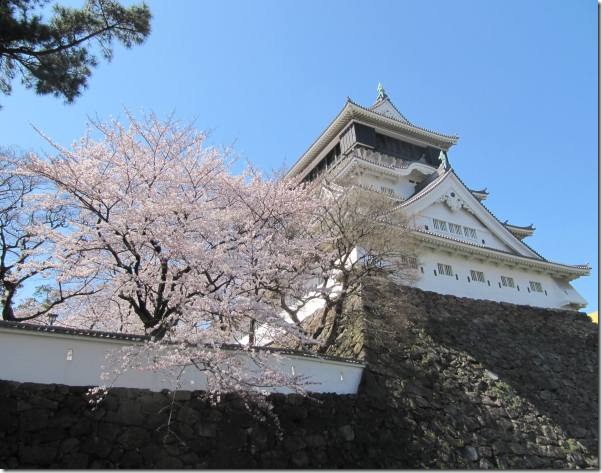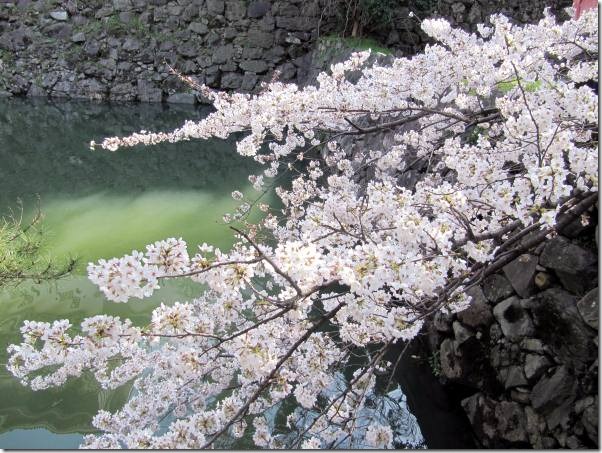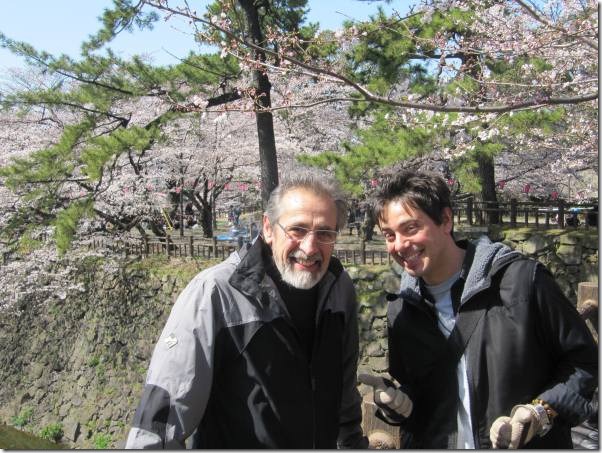A popular hanami (cherry blossom watching) spot is the Kokura castle—a 17th century castle built and owned by the Ogasawara clan, burned down in a 19th century war, and now restored as a museum.
I don’t know when the cherry trees were planted.
I have a notion these trees are forgotten for 51 weeks of the year. Then suddenly, they explode onto schedules—and into the Kokura dawn, steeping the air with their delicate perfume. In a few days a garland of white-pink blossoms wraps the castle.
Cherry florescence (sakura) drapes the motes and bejewels the slant rock base of the castle. They sprawl above the worn grass and blue tarps and drunken business parties. They look down upon pink-faced children and parents who point and point.
There is a young woman on a plywood stage in front of dusty rows of chairs. Couples and groups of teenage girls stroll by, a few people sit and listen. She croons American pop tunes—Billy Joel is added to the blooms.
And my camera is at my wrist. Everyone takes pictures. And in case there weren’t enough pixels spent on the efflorescence, the castle gift shop will sell you postcards of cherry-bloom close-ups…along with brown bottles of rice wine, Shogun figurines and plastic samurai swords.
But this effulgence, this cherry tree promiscuity, will not be downgraded. I brought my eyes here, but many pause with their hearts. Especially at the Zen temple down a stone path, a short walk away. And especially the old ones—whose ranks I’m joining. They pause wordless under the sakura, between castle and temple.




They’re beautiful, but nothing comes close to joy in the human face.
It looks like you guys are having a wonderful time! Looks like you picked the right time to go to Japan. Love you both so much. Give my love to Mike!
Lovely! Enjoy!
Stephen, I have been thinking a lot about cherry blossoms lately as their bloom time has been watched and recorded longer than any other plant. This data is very useful for those studying spring advance – resulting from (ahem) climate change. (I spend a lot of time doing this and it has been a busy and early season due to the mild winter and shattered temperature records of March.) The Japanese and Chinese records go back for centuries. Because the trees in Washington D.C. are of the same stock, we can do comparisons of ours planted 100 years ago.
On a less geeky note, the trees tie the U.S. and Asia together in both symbolic ways and in the pleasure that comes from enjoying the beauty of these wonders of nature. I love the smiles and joy radiating from your faces!
Hello to Michael!
Thank you all! Yes to joy!